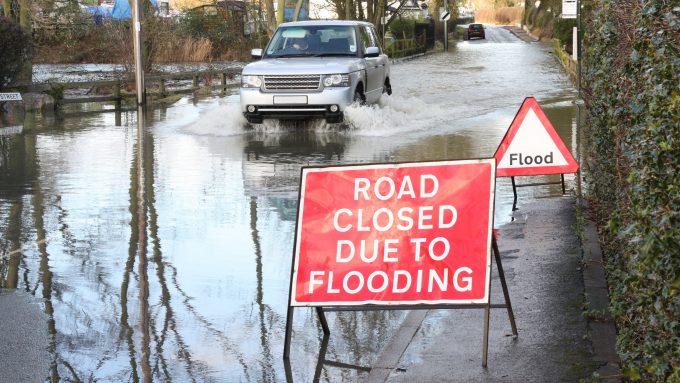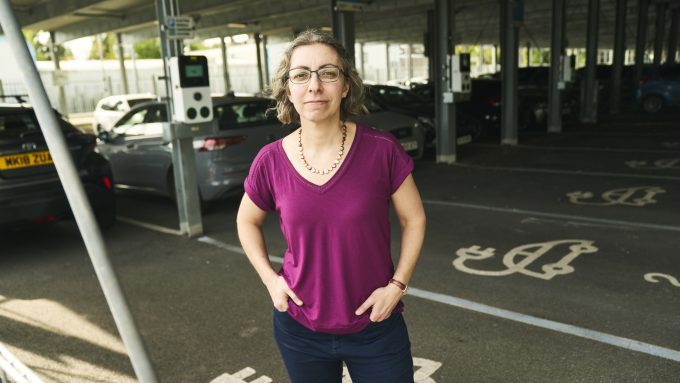
Taking collective action for net zero – why place matters

Achieving the UK’s 2050 target for net zero will be the defining challenge of the next three decades and a central driver of innovation across all sectors - but how are we going to deliver it on the ground?
The political objective of ‘Net Zero’ has been defined but the challenge remains in delivering the most appropriate and feasible local-level actions. Whilst the majority of local councils have declared climate emergencies, many are unsure of where to start and how to reconcile targets with other large-scale ambitions like the levelling up agenda, delivering major new infrastructure and building new homes. To meet the net zero challenge, we need a place-based approach that engages across sectors, communities, and asset owners. We believe that innovation and better use of data are key to achieving this.
Although the UK has nearly halved its carbon emissions since 1990, this is largely due to energy supply shifts and increased renewable energy use. In contrast, emissions from transport and households have remained largely unchanged since 1990. This points to an urgent need to fundamentally change the way we manage, plan and design our places.
Transport, energy supply and the built environment are three critical sectors to achieving net zero and cannot be considered independently given their impact on one another. We cannot consider reducing the direct emissions from our homes without examining how we consume and use energy for heating and we can’t look to promote active travel without considering the distance between the homes and workplaces people are travelling to. Yet they continue to be planned for, delivered and funded in silos.
Through shaping our built environment and daily behaviour, spatial planning has a critical role to play, but we need change quicker than current place planning processes allow. Our current planning processes are fragmented, political and slow to respond, which is an area we’ve advocated for change in through our digital planning work.
However, we need to think beyond the remit of the planning system to meet the challenge of net zero. 80% of the houses we’ll have in 2050 have already been built, which limits our opportunity to achieve net zero purely through new development. Furthermore, local authorities are only directly responsible for 2-5% of their local area’s emissions. To create impact at scale, communities and businesses must be engaged and empowered to play their part.
Given the interdependencies between these three sectors and the fragmented, slow-paced nature of place planning today – we think an integrated, place-based approach is required to deliver net zero action.
Prototyping how integrated place planning can unlock cross sector action
At Connected Places Catapult, we believe that innovative approaches using data and technology are key enablers for integrated place planning for net zero. We partnered with Open Innovations and TPXimpact to develop two prototypes showing how data and technology can promote collaboration, enable coordination and unlock action.
The prototypes explore two cross-sector challenges that resulted from an expert roundtable. We believe these problem areas are ripe for innovation in creating new markets and reducing dependency on local authorities:
EValuator: EV bulk charging
A tool that pulls together key information for local authorities to plan their EV strategy, identifying the best spatial locations for rolling out bulk charging infrastructure for fleets (think: taxi ranks, bus fleets, ambulances, delivery vehicles).
Using open datasets, the tool allows for modelling and ‘what-if’ analysis that gives a better understanding of the feasibility and impact of installing charge points and facilitates earlier, more informed conversations with energy providers and EV adopters. Removing the barriers to EV charging provision is essential to promote attitude shifts towards lower carbon transport and ultimately deliver net zero action.
The prototype presents the art of the possible with data that is available and openly accessible today. It demonstrates how processes and decision-making can be streamlined through earlier cross-collaboration between the three sectors.
View the prototype via this link, and please send us your comments using the feedback form at the bottom of the page.
A Community Retrofit Service
A service that helps the ‘able-to-pay’ homeowner market estimate the carbon impact of their home, assess retrofit options, connect with peers, supply chains and grants and monitor the impact of their retrofit after works have been carried out.
The service aims to make it easier for homeowners to navigate retrofit options and give them confidence in their decisions.
This would also support local authorities in monitoring the energy efficiency of neighbourhoods and their journey to net zero, whilst building a retrofit evidence base to encourage consumer demand and identify early adopters. The evidence of consumer demand could then stimulate growth in the retrofit supply chain.
This is a speculative vision for a new service-oriented model, which could galvanise collective action and improve public engagement. This tool could also provide community insights to inform net zero projects in the future.
View the prototype via this link to see how it works.
Both these areas aim to encourage asset upgrades by asset owners themselves to stimulate local markets, thereby creating a paid-for service and reducing dependency on public sector grants and resources. We believe this is critical in ensuring that both our infrastructure and supply chain can meet future demand. Within this, local authorities have a key role to play in convening these sectors to bring information, tools, and people together to escalate mass adoption and inform future planning.
The prototypes represent two different stages on the journey to fully integrated planning – one shows what is possible today and the other is more speculative, showing how a new service-oriented model could unlock collective action. We see these as two stages which could lead to a future where services are integrated to plan net zero places holistically.
What’s next? Delivering the evidence and tools to enable integrated planning for net zero
We believe these prototypes can be developed further and used as working tools to aid collective action and place-based decision-making. We’d love to develop and test them further in a real place, to make sure they respond to local, specific challenges.
We’ve shown what’s possible in a short space of time and how the use of existing data has major potential to transform the way we plan for net zero. What might be possible if we took a similar approach to decarbonising new development or planning 20 minute neighbourhoods?
These prototypes form part of our broader research into integrated planning for net zero. We spoke to stakeholders across government, local authorities and the private sector to identify major shared challenges and opportunity areas, as well as emerging initiatives adopting new approaches to place planning. We will be launching our report with these findings in the coming months.
If you’d like to find out more, we’ll be hosting a webinar in May to showcase the prototypes and our findings. To register for the webinar, sign up here.
We hope these prototypes will spark a conversation and we’d love to hear any feedback. If you’d like to work with us or find out more, please get in touch with Katie Adnams at katie.adnams@cp.catapult.org.uk





